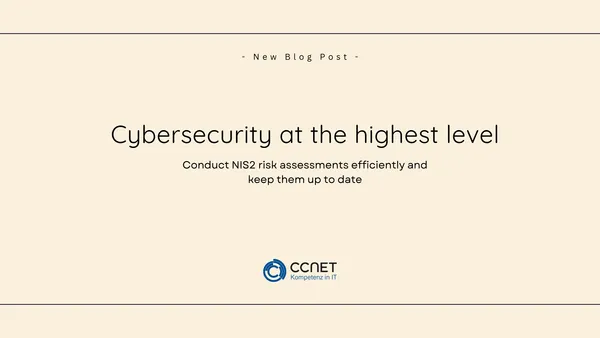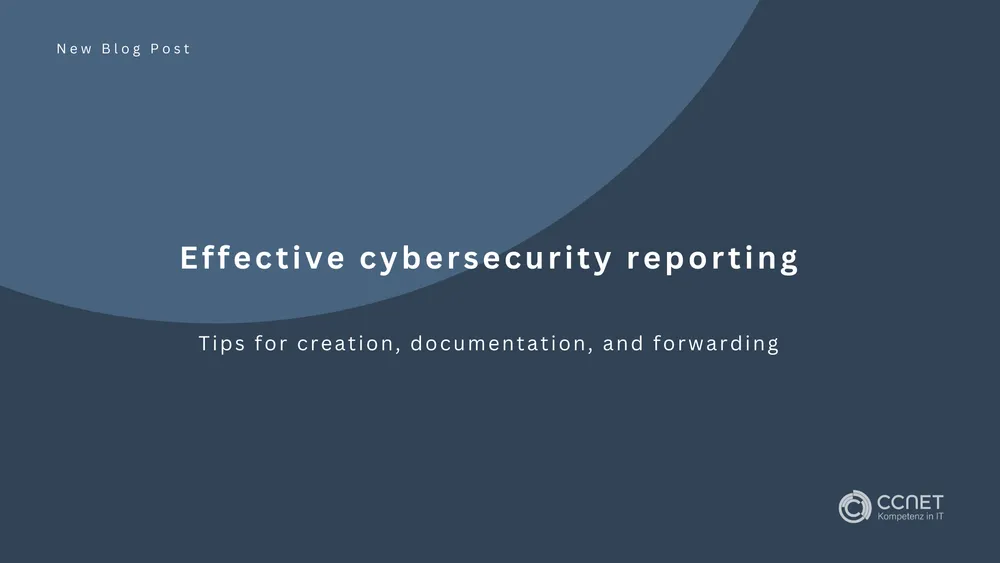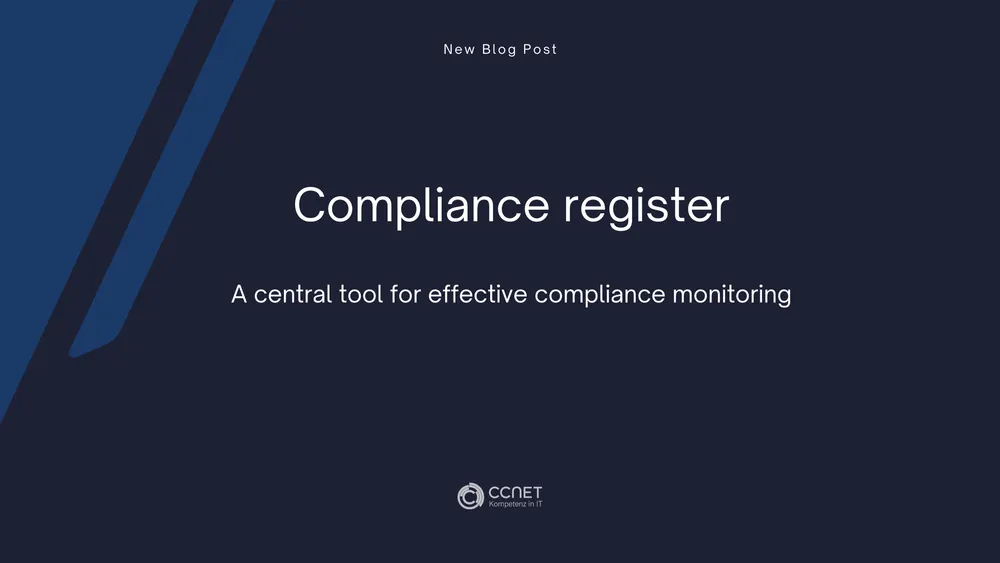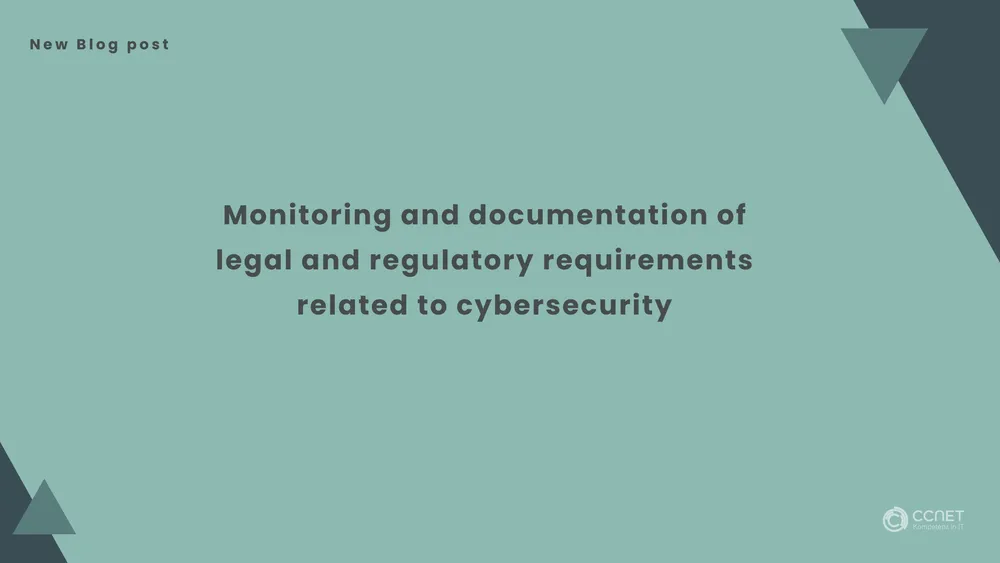
CCNet
Dec 30, 2024 • 3 min read

Cybersecurity at the Highest Level: Efficiently Conduct and Regularly Update NIS2 Risk Assessments
The continuous evaluation and updating of IT risks is a critical step in a company’s cybersecurity management. The NIS2 Directive places particular emphasis on regular risk assessments covering all critical systems and data, which can flexibly respond to new threats. A structured process enables companies to identify, assess, and effectively mitigate risks early.
What You Need: Regular and Up-to-Date Risk Assessments
A clear structure for conducting risk assessments ensures that risks are correctly evaluated and appropriate countermeasures are taken. The process must not only take place regularly but also be able to react quickly when new threats are identified. This allows companies to respond appropriately to dynamic cyber threats and keep their security posture up to date.
How to Implement It: A Detailed Process for Conducting and Updating Risk Assessments
-
Process Goal: Proactive Risk Assessment and Flexible Response
- Objective: The main goal is to regularly assess and keep all risks to the IT infrastructure up to date. This process also includes immediate reassessment when new threats are discovered or significant changes in the IT environment occur.
-
Process Scope: Comprehensive Coverage and Flexibility
- Scope: The process covers the quarterly assessment of all critical IT systems, networks, and data within the company. Additionally, there are mechanisms for immediate reassessment when new threats are identified.
-
Frequency of Risk Assessments: Scheduled and Reactive Approaches
- Regular Review: Risk assessments are conducted at least quarterly to ensure continuous monitoring of the security situation.
- Immediate Reassessment: An immediate reassessment is conducted when new threats or changes in the IT landscape occur, ensuring a rapid response to unexpected risks.
-
Process Steps: Structured Flow from Initiation to Monitoring
-
4.1. Initiating the Quarterly Risk Assessment
- Responsible: IT Security Officer
- Activity: At the beginning of each quarter, the IT Security Officer initiates the quarterly assessment. A team of IT specialists is formed to effectively conduct the process.
-
4.2. Collecting Relevant Data
- Responsible: IT Team
- Activity: The IT team collects data on IT systems, networks, current threats, and past security incidents. This data forms the basis for assessing the current risk situation.
-
4.3. Conducting the Risk Assessment
- Responsible: IT Team
- Activity: The collected data is used to assess existing risks and identify potential new risks. These are classified according to likelihood and potential impact.
-
4.4. Documentation and Reporting
- Responsible: IT Security Officer
- Activity: The results of the assessment are documented in a detailed report. This includes an overview of the current risk situation and provides recommendations for risk mitigation. The report is then presented to management.
-
4.5. Initiating Immediate Reassessment When New Threats Are Detected
- Responsible: IT Security Officer
- Activity: As soon as a new threat is identified, the IT Security Officer immediately initiates a reassessment of the affected risks. The IT team quickly collects all relevant data and reassesses the situation.
-
4.6. Adjusting Security Measures
- Responsible: IT Team
- Activity: Based on the reassessments, immediate measures for risk mitigation are implemented. This may include updating security protocols, software updates, or adjusting access rights.
-
4.7. Monitoring and Follow-Up
- Responsible: IT Security Officer
- Activity: The effectiveness of the implemented measures is continuously monitored. Results are documented in regular reports, and adjustments are made as needed.
-
-
Roles and Responsibilities: Clarity in the Process Flow
- IT Security Officer: Responsible for initiating the quarterly and immediate risk assessments, as well as for documentation and reporting.
- IT Team: Responsible for data collection, conducting the risk assessment, and implementing risk mitigation measures.
- Management: Approves the proposed measures and allocates the necessary resources.
-
Reporting: Detailed and Timely Information
- Quarterly Reports: A comprehensive report is created after each quarterly assessment. This includes the risk assessment results, recommended measures, and an overview of the current risk situation.
- Immediate Reporting: For new threats, reports are created promptly and forwarded to management to enable quick decision-making.
-
Continuous Improvement: Adapting to Threats and Technological Developments
- Activity: The process is continuously reviewed and adapted to ensure that risk assessment remains current. Methods and evaluation criteria are adjusted to reflect current threats and technological advances, ensuring the best possible results.
Benefits of Regular and Up-to-Date Risk Assessments
- Constant Relevance: Quarterly assessments and immediate reassessments ensure that your company’s risk situation is always up to date.
- Proactive Risk Mitigation: By quickly responding to new threats and adjusting security measures, the company is proactively protected from cyber risks.
- Efficient Decision-Making: Detailed and timely reports enable management to react quickly and make informed decisions.
Conclusion: A Dynamic and Continuous Risk Assessment for Optimal Protection
Regular and up-to-date IT risk assessments at the highest level are an essential part of any cybersecurity strategy. A clear and flexible process allows risks to be identified early and mitigated effectively. With a strong focus on quick reassessment when new threats emerge and continuous improvement, you stay ahead of current developments and effectively protect your company from cyber risks – fully in line with the NIS2 Directive.


